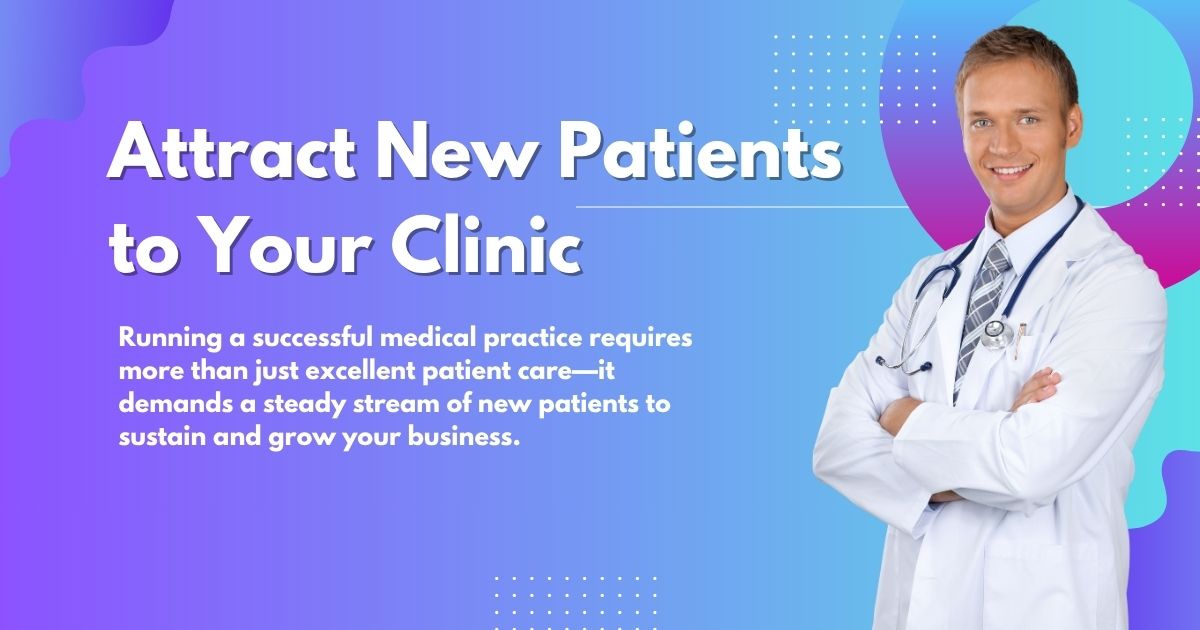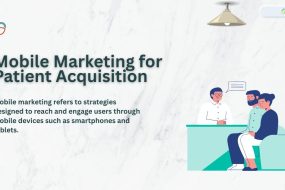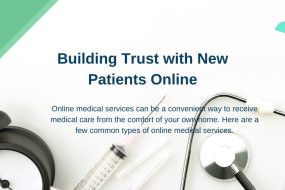
Running a successful medical practice requires more than just excellent patient care—it demands a steady stream of new patients to sustain and grow your business. With healthcare becoming increasingly competitive and patients having more choices than ever, attracting new patients to your clinic requires strategic planning and execution.
This comprehensive guide will walk you through proven strategies to increase patient acquisition, from building your online presence to leveraging patient referrals. Whether you’re a new practice looking to establish your patient base or an established clinic seeking growth, these actionable insights will help you connect with potential patients and build a thriving practice.
Build a Strong Online Presence
Create a Professional Website
Your website serves as the digital front door to your practice. Nearly 80% of patients research healthcare providers online before scheduling an appointment, making your website a critical tool for patient acquisition strategies.
Essential elements of an effective medical practice website include:
- Clear contact information and location details
- Easy-to-use appointment scheduling system
- Provider credentials and specialties
- Patient testimonials and reviews
- Educational content about your services
- Mobile-responsive design for smartphone users
Ensure your website loads quickly and provides a seamless user experience. Patients who struggle to navigate your site or find basic information are likely to choose a competitor instead.
Optimize for Local Search

Local search engine optimization (SEO) helps your practice appear when potential patients search for medical services in your area. This is crucial since most patients prefer healthcare providers within a reasonable distance from their home or workplace.
Key local SEO strategies include:
- Claiming and optimizing your Google My Business listing
- Including location-specific keywords on your website
- Creating location pages if you have multiple offices
- Building citations on local directories and healthcare platforms
- Encouraging patient reviews on Google and other review sites
Maintain Active Social Media Profiles
Social media platforms provide opportunities to connect with potential patients and showcase your practice’s personality. Focus on platforms where your target demographic is most active—Facebook and Instagram work well for most medical practices.
Share valuable health tips, behind-the-scenes content, patient success stories (with permission), and community involvement. Respond promptly to comments and messages to demonstrate your commitment to patient communication.
Leverage Patient Reviews and Testimonials
Patient reviews significantly influence healthcare decisions. Studies show that 84% of patients trust online reviews as much as personal recommendations when choosing a healthcare provider.
Encourage Satisfied Patients to Leave Reviews
Develop a systematic approach to requesting reviews from happy patients. This might include:
- Following up after successful treatments with a polite request
- Sending email reminders with direct links to review platforms
- Training staff to mention reviews during checkout
- Providing business cards with QR codes linking to review sites
Respond to All Reviews Professionally
Engage with both positive and negative reviews professionally. Thank patients for positive feedback and address concerns from negative reviews promptly and empathetically. This shows potential patients that you value feedback and are committed to patient satisfaction.
Read our latest blog Telehealth Digital Marketing Strategies
Implement Effective Referral Programs
Build Relationships with Other Healthcare Providers
Establish connections with physicians in complementary specialties who can refer patients to your practice. Attend medical conferences, join professional associations, and participate in local healthcare networks.
Maintain regular communication with referring physicians by:
- Sending prompt consultation reports
- Providing updates on referred patients’ progress
- Offering educational presentations on your specialty
- Hosting networking events for local healthcare providers
Create Patient Referral Incentives
Satisfied patients are your best advocates. Implement a referral program that rewards patients for bringing friends and family to your practice. This could include:
- Discounts on future services
- Free health screenings
- Small gifts or tokens of appreciation
- Priority scheduling for referred patients
Focus on Patient Experience and Retention
Streamline the Appointment Process
Make it as easy as possible for patients to schedule appointments. Offer multiple booking options including:
- Online scheduling systems
- Phone appointments with minimal hold times
- Text message confirmations and reminders
- Flexible scheduling options including early morning or evening slots
Minimize Wait Times
Long wait times are a major source of patient frustration and can lead to negative reviews. Implement efficient scheduling systems and keep patients informed about delays. Consider offering amenities like complimentary Wi-Fi, beverages, or educational materials to improve the waiting experience.
Provide Exceptional Customer Service
Train your entire staff to provide outstanding customer service. This includes:
- Greeting patients warmly and professionally
- Addressing concerns promptly and empathetically
- Following up after appointments to ensure satisfaction
- Maintaining clear communication throughout the patient journey
Utilize Digital Marketing Strategies

Content Marketing
Create valuable content marketing that addresses common health concerns and questions from your target audience. This might include:
- Blog posts about health topics relevant to your specialty
- Educational videos explaining procedures or treatments
- Infographics about preventive care
- Downloadable guides or checklists
Quality content establishes your expertise and helps potential patients find your practice through search engines.
Email Marketing
Build an email list of current and potential patients to share health tips, practice updates, and appointment reminders. Segment your list based on patient interests and demographics to ensure relevant messaging.
Pay-Per-Click Advertising
Google Ads and social media advertising can help you reach potential patients actively searching for healthcare services. Target keywords related to your specialty and location, and create compelling ad copy that highlights your unique value proposition.
Engage with Your Local Community
Participate in Community Events
Sponsor local health fairs, charity events, or community festivals to increase your practice’s visibility. Set up informational booths offering free health screenings or educational materials.
Partner with Local Organizations
Build relationships with:
- Fitness centers and gyms
- Senior centers and retirement communities
- Schools and universities
- Workplace wellness programs
- Community organizations and clubs
These partnerships can lead to speaking opportunities and referrals from community members.
Offer Educational Workshops
Host free educational seminars on topics related to your specialty. These events position you as a trusted expert while providing value to potential patients. Promote workshops through social media, local newspapers, and community bulletin boards.
Learn How to Promote Telehealth Services
Measure and Optimize Your Efforts
Track Key Metrics
Monitor important metrics to understand which patient acquisition strategies are most effective:
- New patient volume and sources
- Website traffic and conversion rates
- Review ratings and frequency
- Referral patterns and sources
- Cost per acquisition for different marketing channels
Gather Patient Feedback
Regularly survey patients about their experience and how they heard about your practice. This feedback helps you identify successful strategies and areas for improvement.
Adjust Strategies Based on Results
Use data to refine your approach continuously. If certain marketing channels aren’t generating results, reallocate resources to more effective strategies. Stay flexible and adapt to changing patient preferences and market conditions.
Building Long-Term Success Through Patient-Centered Growth
Attracting new patients to your clinic requires a multifaceted approach that combines digital marketing, community engagement, and exceptional patient care. The most successful practices focus on creating positive patient experiences that naturally lead to referrals and positive reviews.
Start by implementing one or two strategies from this guide, then gradually expand your efforts as you see results. Remember that building a strong patient base takes time and consistency. Focus on providing value to your community and maintaining high standards of care—new patients will follow naturally.
Consider conducting a monthly review of your patient acquisition efforts to identify what’s working and what needs adjustment. The healthcare landscape continues to evolve, and staying responsive to patient needs and preferences will help ensure your practice’s long-term success.


















No Comments